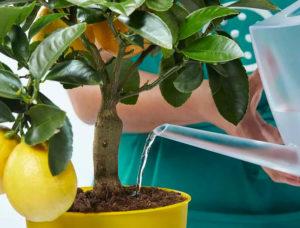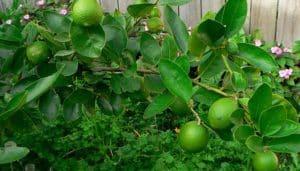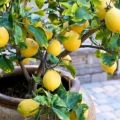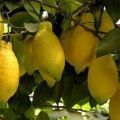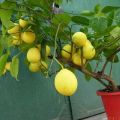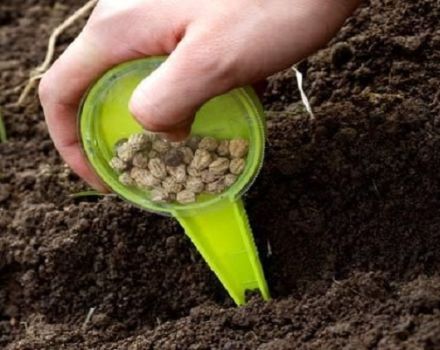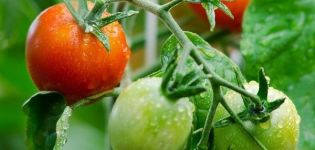Description of Novogruzinsky lemon, planting and care rules at home
Novogruzinsky lemon is considered to be very popular. This crop gives a good harvest and is easy to care for. To achieve success in growing a plant, planting should be carried out correctly. Compliance with the recommendations for the care of the crop is of no small importance. At the same time, lemon should provide full protection against diseases and pests.
Description and characteristics of Novogruzinsky lemon
Under natural conditions, the tree of this variety reaches 2 meters in height. When growing at home, it does not exceed 1.65 meters. The culture is characterized by a rather wide and spreading crown. The tree has dense foliage of light green color. It is characterized by an elongated shape.
The lemon tree has white flowers with a pronounced pleasant aroma. The fruits have an oval, slightly elongated shape. They are covered with a peel 5 millimeters thick. It has a smooth and shiny surface. The weight of the lemon is 120 grams. There is a lot of juice in the composition. It has an intense aroma.
The fruit contains acid, fructose and a lot of vitamin C. In comparison with other crops, Novogruzinsk lemons later bloom and yield a harvest. This usually happens only for 4-5 years. Lemon has a high yield. The culture is considered unpretentious. She does not need high humidity or soil.
Advantages and disadvantages of the variety
The main advantages of the plant include the following:
- high adaptive characteristics, including indoor cultivation;
- the ability to harvest 2-3 times a year;
- high yield parameters in adult crops;
- great taste with a moderate amount of acid;
- thin skin - less than 5 millimeters.
The disadvantages of the plant include the late flowering period. The first fruits can be obtained at 4-5 years of age.
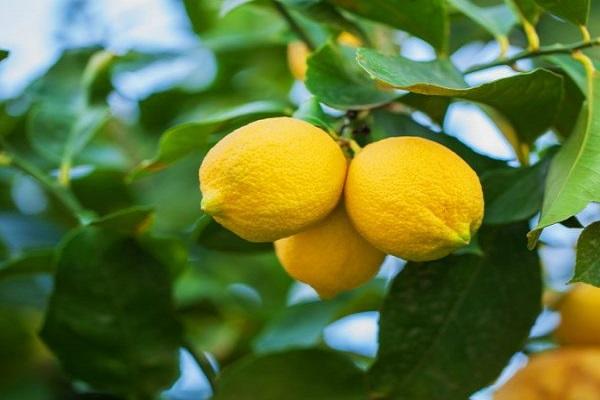
The specifics of growing crops at home
Growing a plant has certain characteristics. To achieve good results in this matter, it is worth following the rules for carrying out planting work.
Planting material
You can get the seed yourself or buy it in the store. For the home, it is best to use a seed propagation method. Thanks to its use, it is possible to obtain a strong and viable plant.
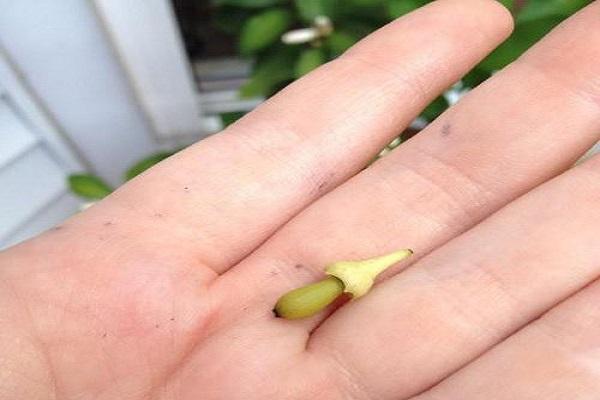
Priming
Plant roots require a lot of oxygen.Therefore, it is recommended to choose loose soil for lemon, which allows a lot of air to pass through.
Young plants need light soil, adults - lumpy.
For the independent production of the substrate, it is worth mixing in equal parts leafy soil, peat, humus, sand and sod. It is also permissible to add 100 grams of wood ash to a bucket of soil. For drainage, it is allowed to use crushed brick or expanded clay.
Capacity
Lemon should be planted in a ceramic or wooden pot. To grow a seed culture, you need a small container with a substrate.
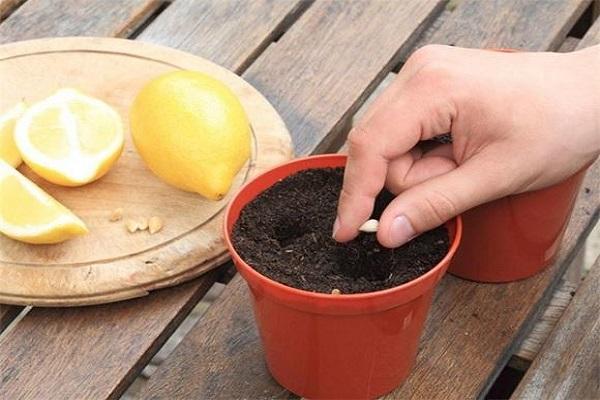
Planting process
Lemon seeds should be deepened by 1 centimeter. As a result, there should be a distance of 5 centimeters between them.
To plant a lemon, it is recommended to follow these steps:
- Take a small pot and make holes in it.
- Pour drainage on the bottom.
- Sprinkle this layer with soil.
- Dip the seeds into the ground and water them a little.
- Place crops in a warm room. The temperature regime should be + 19-22 degrees.
- It is recommended to keep the soil moist.
- Under suitable conditions, the seeds will germinate in 14-19 days.
Specificity of plant care
To succeed in growing a crop, it is worth providing it with complete and high-quality care.
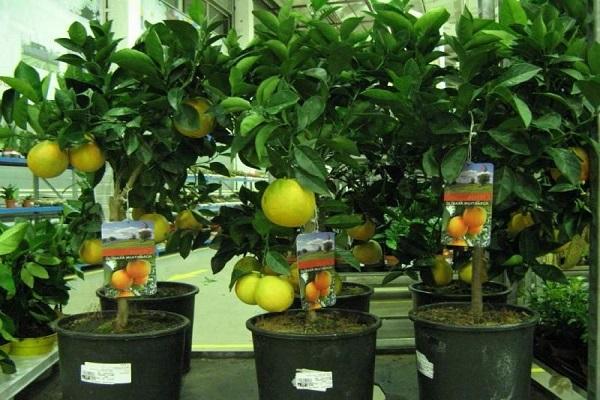
Temperature regime
The temperature is selected taking into account the growing season and the seasonal factor:
- young plants require a temperature of +17 degrees for 3 years;
- at the flowering stage, a mark of + 14-18 degrees is needed - with an increase in indicators, the flowers fall off;
- at the fruiting stage, a temperature of + 20-22 degrees is required;
- in winter, an indicator of + 13-15 degrees is needed.
Air humidity
Optimum moisture parameters for lemon trees should be 60-70%.
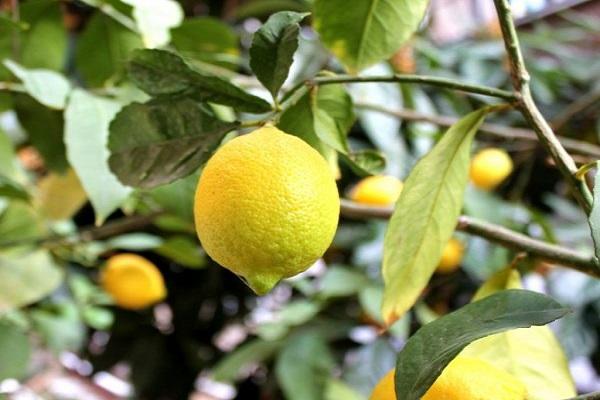
Crown formation
It is recommended to prune the crop to form a crown. When growing a tree to decorate a room, it is permissible to give the crown a rounded shape. If a lemon is producing a crop, it should have a lot of side shoots.
To form the crown of a fruit tree, pinch:
- Zero shoot is pinched when it reaches 22-26 centimeters.
- The next pinching is performed at a distance of 16-20 centimeters from the first.
- It is worth leaving 4 buds between the nips. Side branches will appear from them.
- Shoots of the first order are pruned when they reach 26-35 centimeters.
- After ripening, they are cut 5 centimeters below the pinching zone.
- The next shoots are pinched so that each next branch is 5 centimeters less than the previous one.
Fruit buds appear on the shoots of 3-4 orders of magnitude. If you neglect to pinch the plant, the branches will be too long. In this case, the growth of fruit plots slows down.
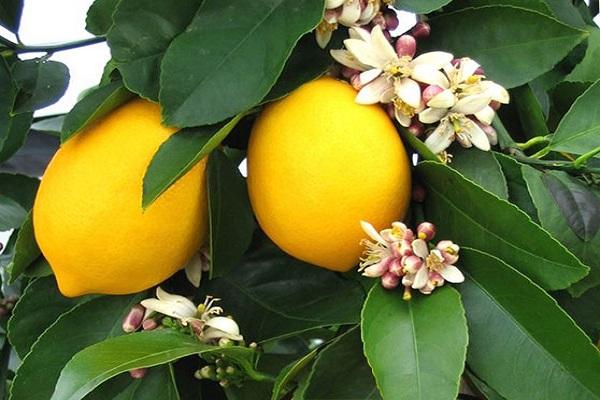
Dry, limp and weakened branches should be systematically removed from the tree.
They absorb the juice of the crop, interfering with the normal development of healthy shoots.
Watering and feeding lemon
After planting in the ground, the culture is abundantly moistened. Subsequent watering during plant care is reduced to 1 time per day or up to 1-2 times a week. They are performed from October to April. Additionally, spraying is performed. In summer, this procedure is carried out twice a week, in winter - 2 times a month.
Diseases and pests
Lemon can be associated with various diseases. Violations of the rules of plant care lead to them. Most often, the following signs appear:
- Yellowing of foliage. This symptom is caused by increased dryness of the indoor air or mineral deficiency. Also, yellowing of the leaves is due to the attack of a spider mite. To prevent problems, lemon should be systematically sprayed with water and fertilized. It is not recommended to place the tree near heating sources. Insecticides will help to cope with spider mites.
- Falling leaves. This problem is caused by attacks by spider mites. Insufficient watering is also a provoking factor.
- Dryness of the tips of the leaves. Moisture deficiency is considered a key factor. Improper lighting is also the cause of problems. Dry spots on foliage are often a symptom of sunburn.
Lemon often encounters attacks from harmful insects. Scabbards, aphids, mealybugs lead to problems. The plant is also attacked by the whitefly. Insecticides and folk recipes help to cope with parasites.
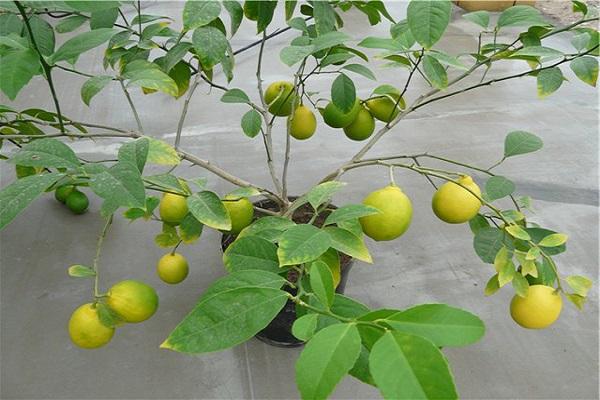
Common problems
When growing lemon, there is a risk of such problems:
- deficiency of nutrients;
- temperature fluctuations;
- root burns caused by excessive use of fertilizers;
- excessive amount of sunlight;
- increased dryness of the air;
- lack of moisture in the ground.
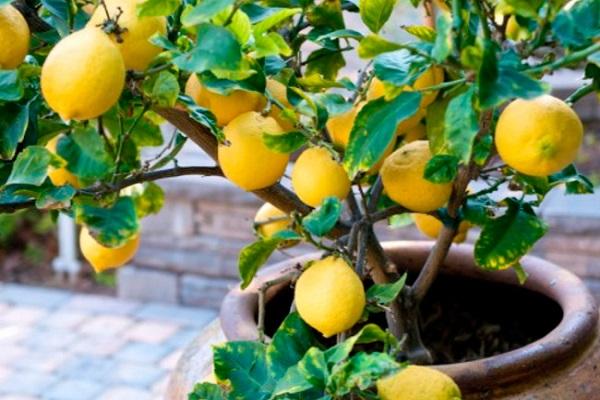
Cleaning and storage
When the lemons turn yellow, they can be harvested. The fruits of this variety are perfectly stored. The plant is characterized by excellent productivity. Lemon bears 50 fruits in a full year.
Novogruzinsky lemon has a high yield and excellent taste of the fruit. To succeed in growing a culture, it needs to provide quality care.
